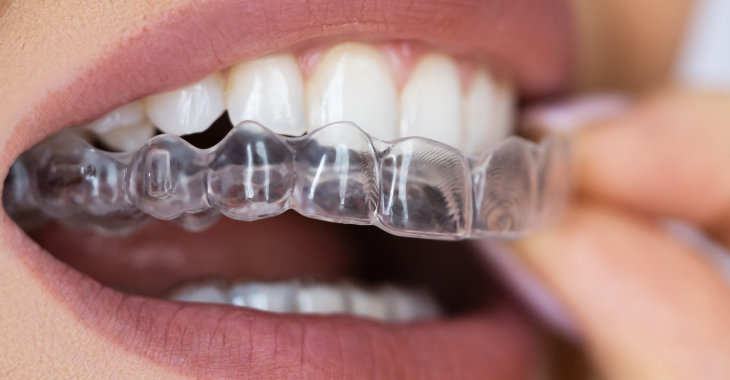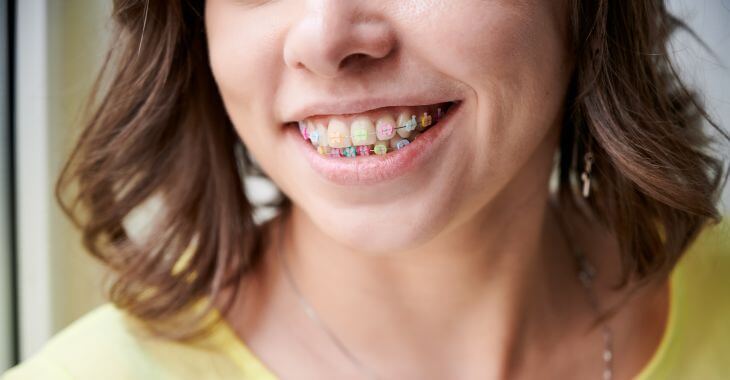What Are Properly Aligned Teeth?

Most people understand that teeth alignment is important. Orthodontic treatment is designed to help adolescents, teens and adults achieve properly aligned teeth. However, many people are unsure of how teeth should be aligned. How are your teeth supposed to sit? Here is what you need to know.
If you think braces and aligners create an aesthetically-pleasing smile, you are only partially correct. While aesthetics may be the motivating factor for many people, orthodontic treatment is important to obtain perfect teeth alignment for better oral and overall health.
How Are Teeth Supposed to Sit?
Properly aligned teeth come together comfortably when you bite and are straight within the mouth. Many different factors impact teeth alignment. How the upper and lower teeth come together, or “bite,” is one factor; individual teeth position is also a factor.
Perfect teeth alignment includes teeth that line up when you bite. In addition, the front and back teeth should come comfortably together without overlapping. This allows for proper jaw function. The teeth should also be straight, not overlapped, crooked, gapped or crowded within the mouth.
Misaligned Teeth Conditions
When you do not have properly aligned teeth or a malocclusion, it may be recommended that you seek orthodontic treatment. Your dentist or orthodontist can diagnose your misalignment condition and determine the best treatment to align your teeth. Some of the possible misalignment conditions include the following.
- Crowded Teeth
- When there is not enough room for your teeth, crowding can occur. Also, if the jaw or mouth is too narrow or small, permanent teeth can overlap or twist, causing a malocclusion.
- Gapped Teeth
- Teeth gaps or diastema are common. They can occur between any teeth, but the front teeth are the most common. Gaps can be caused due to small teeth or genetics. Spacing issues with the teeth may or may not affect alignment, but many people want to correct gapped teeth for appearance.
- Overbite
- When the upper teeth overlap on the outside of the lower teeth, it is called an overbite or deep bite. This can be caused by jaw misalignment. While properly aligned teeth do slightly overlap between the top and bottom, it is usually less than a 2 mm gap.
- Crossbite
- The opposite of an overbite, a crossbite, where the top teeth sit inside the lower teeth when the mouth is closed. Genetics is the most common cause of this tooth alignment, but certain oral habits like thumb sucking and tongue thrusting can contribute to a crossbite.
- Underbite
- An underbite also involves the upper teeth sitting inside the lower teeth, but it is due to jaw alignment, not teeth position. The lower jaw juts forward, resulting in the misalignment. Genetics are a bigger factor in an underbite versus a crossbite that can be caused by lifestyle habits.
- Protruding Teeth
- Protrusion or “buck teeth” occur when the teeth stick out, usually accompanied by an overbite. The teeth can flare outward, impacting teeth alignment. Teeth protrusion can be caused by a smaller upper jaw, genetics, thumb sucking and tongue thrusting.
Why You Want Perfect Teeth Alignment
When your teeth fit perfectly together and side-by-side, it does much more than create a beautiful smile. While aesthetics are important, there are many reasons that bite problems and malocclusions should be addressed if you do not have properly aligned teeth. Here are some benefits of teeth alignment:
- Reduce jaw disorders. When the bite is not aligned, it puts stress on the temporomandibular joint (TMJ). This can cause painful TMJ disorders with symptoms like headaches, earaches and jaw pain.
- Prevent teeth damage. Teeth that meet correctly when biting or chewing reduce stress on the teeth. Teeth should meet on the flat surfaces, not the inclines, to prevent unnecessary damage.
- Oral health. Aligned and straight teeth are easier to keep clean. Crowded, gapped and overlapped teeth are prone to decay, gingivitis and periodontal disease.
- Health issues. A misaligned bite or jaw can impact breathing, especially when sleeping. Misalignment of teeth or jaws can contribute to obstructive sleep apnea and other serious health issues.
When you have a bite problem or misaligned teeth, the most common treatment is wearing an orthodontic device. Braces are used for more serious bite alignment problems, where clear aligners can be an option for milder malocclusion concerns. In severe cases, oral surgery may be needed to correct misaligned teeth.

If you have crooked, overlapped or gapped teeth, or your bite is not aligned, you could benefit from dental or orthodontic treatment. Orthodontics like clear aligners or braces can improve the appearance of your smile and reduce oral health problems. Orthodontic treatment can last from 6 months to a few years.
Properly aligned teeth should be straight and touch on the flat surfaces when biting or smiling. If you have misaligned teeth, talk to your dentist or orthodontist about the best treatment to achieve perfect teeth alignment.
The information provided on this website, including text, graphics, images, and other materials, is intended solely for informational purposes and should not be used as a substitute for professional medical advice, diagnosis, or treatment.




)